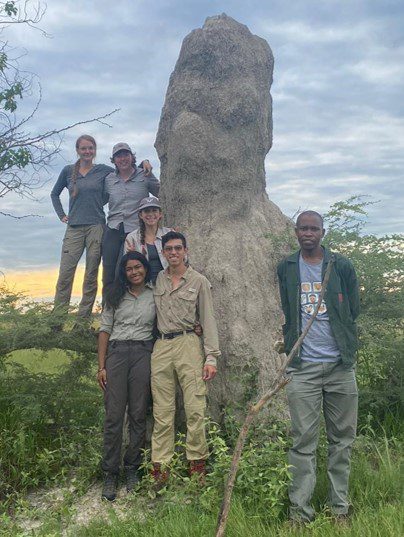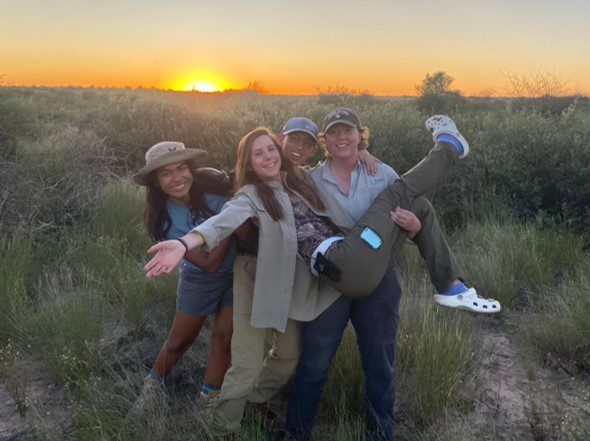By. Dr. T. Wayne Schwertner
In January, six students from Tarleton’s Department of Wildlife and Natural Resources arrived in western Botswana to begin a four-month field research season. The students are researchers in Drs. T. Wayne Schwertner’s and Heather Mathewson’s research lab, the Southern African Conservation Research Initiative, a partnership between Tarleton State University (the project lead), Texas A&M AgriLife Research, Texas A&M AgriLife Extension, and Cheetah Conservation Botswana. Two M.S. students – Chris Mbisana and Kaileigh Smith – will be leading an undergraduate team that includes Emily McGhee, Nancy Montealvo, Anna Nott, and Sebastian Rogers. The goal of the project is to investigate human-wildlife coexistence in pastoral grazing communities in western Botswana in order to promote conservation of large carnivores and other wildlife species in a landscape which is rapidly being lost to agricultural development. All research will be conducted in the important wildlife corridor between the Central Kalahari Game Reserve and the Kgalagadi Transfrontier Park, one of the largest contiguous conservation landscapes in the world.

While the overall theme of research is human-wildlife interactions, each student will be conducting independent research as well as assisting other members of the team. Kaileigh’s research will involve placing GPS collars on African lions to investigate their movements and interactions with humans and livestock. Her work also includes the deployment of novel tracking technology on lions that stands to revolutionize the study of large carnivores. Chris will be using camera traps to investigate the habitat use of other large carnivores such as leopards, cheetahs, brown hyaenas, and African wild dogs in relation to human settlements and the presence of livestock. Working closely with Chris will be Nancy, who will perform a similar investigation of medium-sized carnivores (primarily caracals and jackals) in relation to native herbivores and small livestock. Emily will be studying the ecology of aardvarks, including the use of aardvark burrows by other species such as honey badgers. Emily’s is also working with Field Data Technologies to develop a small camera system to unobtrusively monitor activity inside burrows. Finally, Anna and Sebastian will be working alongside a PhD student from Texas A&M (Otshabile Bahetoleng) examining the role of human communities in natural resource and wildlife conservation decision-making in the study area.
At the conclusion of the field research season in May, the students will return to the United States for a three-month internship with the USDA-Wildlife Services, and then return to Botswana for their second field season during the fall semester. The project is funded by a research grant from the US Department of Agriculture.
